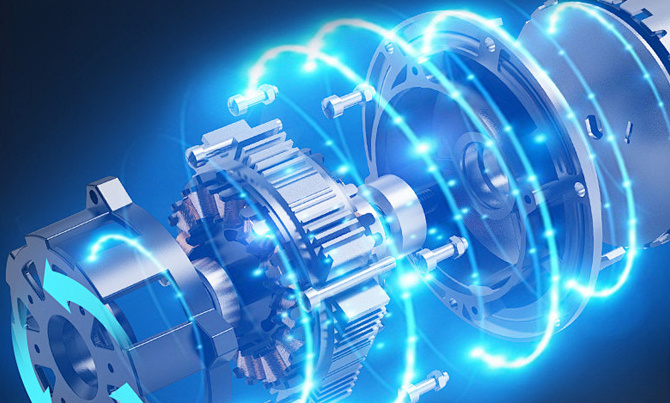Routine Maintenance and Troubleshooting of Electromagnetic Speed Regulating Motor
Routine Maintenance of Electromagnetic Speed Regulating Motor
(1) Daily inspection and spot check of the equipment, check the heating of the motor, pay attention to the vibration of the motor and the electromagnetic slip clutch, and record the running current and voltage, and deal with the problems found in time.
(2) Shake the insulation of the standby equipment once a week and measure the resistance of the excitation coil to ensure that the resistance is within the specified range.
(3) A minor repair shall be carried out every 3 months to purge the motor, electromagnetic slip clutch and tachometer generator so that the gap between the armature and the magnetic pole is normal.
(4) Medium repair shall be carried out once a year to eliminate equipment defects.
Troubleshooting of Electromagnetic Speed Regulating Motor
(1) The electromagnetic clutch vibrates severely at high speeds. This is the pole after support bearing clearance is too large or shaft output eccentric caused. The front end cover of the electromagnetic clutch should be opened, the magnetic pole should be pulled out, the support bearing should be replaced, and the inner sleeve of the shaft should be checked for running sleeve; the outer diameter and inner diameter of the electromagnetic clutch output shaft should be treated, and the oil and dirt at the junction of the outer diameter and inner diameter of the output shaft should be cleaned with alcohol, and then the joint should be coated with metal glue; after the bearing is installed, thereby eliminating vibration.
(2) When starting the drive motor, the output shaft speed is uneven, and the speed drops too fast after loading. This is the result of damage to the pole coil and tachogenerator. Check whether there is any poor connection between the lead wire of the magnetic pole coil and the connection terminal, which leads to the increase of contact resistance. If there is, connect it. Strengthen the insulation at the connection between the excitation coil and the tachometer generator terminal and the cable, repair the tachometer generator and repair the damaged parts.
(3) When starting the drive motor, the output shaft of the controller is not energized, that is, high-speed operation. This indicates that a soft mechanical linkage fault occurs between the input shaft and the output shaft of the clutch (this fault occurs on the gasifier bar machine and the boiler coal feeder many times). Disassemble the electromagnetic clutch and find that the air gap between the rotor and the armature in the clutch has been filled with dust and squeezed tightly, so that the output shaft and the motor rotate together. After the dust in the armature and the magnetic pole is removed, the unevenness caused by friction is polished and reassembled, the clutch starts and runs normally.
(4) electromagnetic speed motor control system failure, should be judged according to the parameter changes, with a multimeter to measure the excitation coil DC resistance, when the resistance value is close to 0 or infinity to prove that the coil is damaged, resistance changes to prove that the coil to ground or turn short circuit, should be coil insulation treatment or replacement of the coil.
(5)DCS can not be automatically controlled. The switch should be switched to the manual position to see if the speed control can be carried out. If it is normal, the input and output parameters connected to DCS should be measured. If the input parameters are abnormal and the output parameters are normal, the fault comes from DCS; If the input parameters are normal and the output parameters are abnormal, the fault comes from the controller V/I converter.




